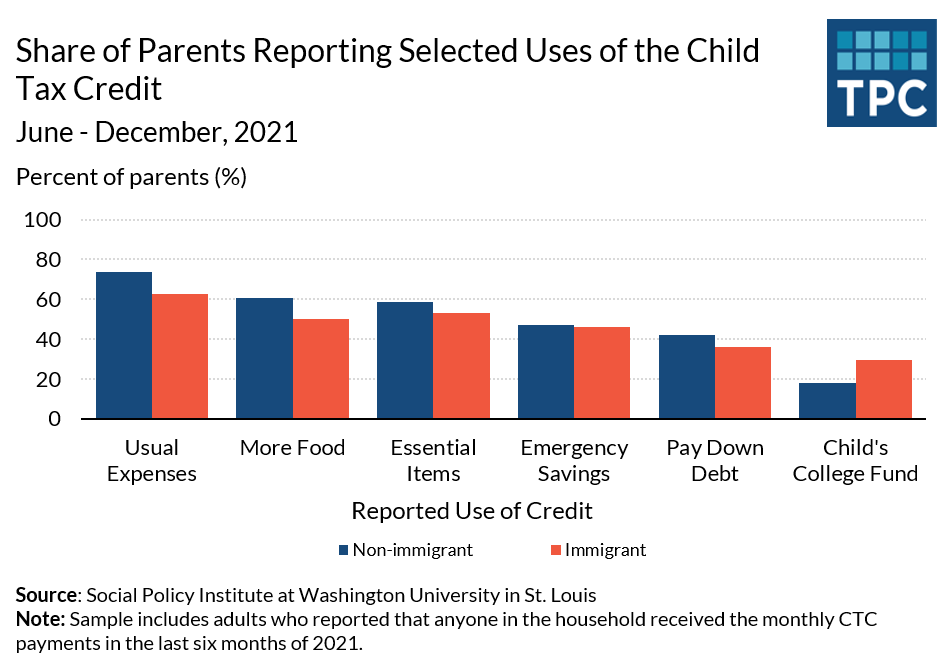Immigrants Were Less Likely to Have Received Expanded CTC; Those Who Did Used It for Essentials
Immigrant parents were less likely to have heard about the 2021 expanded child tax credit (CTC) than parents who were born in the United States, according to a recent survey conducted by the Social Policy Institute at Washington University in St. Louis and Appalachian State University. Survey data collected from December 2021 through January 2022 also showed immigrant parents were less likely to have received the credit compared to non-immigrant parents.
Among those who reported receiving the credit, uses were similar between immigrant and non-immigrant households. Parents used it to pay for day-to-day expenses, purchase more food and essential items. Families also used the credit to bolster emergency savings and pay down debt – activities that could put them in a better financial position as the pandemic wanes. In one difference, immigrant parents reported being more likely than non-immigrant parents to use the CTC for child investment costs, such as building a college fund for their child (see figure).
The American Rescue Plan temporarily expanded the CTC for 2021 – including allowing eligible parents to receive up to half the credit as monthly payments from July to December. Prior to the first payment distribution, there were some concerns about accessibility of the credit for immigrant households.
For example, a California study found that being Hispanic and speaking Spanish at home were associated with a higher risk of not receiving the CTC. Data from our survey just prior to payments going out showed that while 90 percent of US-born parents knew about the expanded CTC, just three-quarters of immigrant parents were aware of the credit. Our new data show that about 74 percent of US-born parents reported getting the monthly payments, compared to about 67 percent of immigrant parents.
When asked about how they planned to use the CTC before the payments began, immigrants were more likely to report using it to make investments in their child’s education including hiring tutors and investing in a child’s college fund.
When payments were made, nearly half of immigrant parents reported the advanced CTC helped them save for their children’s education, versus one-third of US-born parents. Nearly 30 percent of immigrant parents said they used the payments specifically to start a college fund for their child. Immigrant parents were twice as likely as US-born parents to report using the CTC to move their child to a different school or hire a tutor, although in both cases the shares were relatively small – about 10 percent (not shown).
The temporary enhancement of the CTC allowed parents to meet basic needs and shore up finances more generally. In the case of immigrant parents, it also appears to have allowed additional educational investments in children.
Despite representing significant shares of frontline worker occupations during the COVID-19 pandemic, many immigrants were excluded from early pandemic supports. Our findings indicate that allowing immigrant families to benefit from the CTC payments helped these families, along with non-immigrant families, address their short- and long-term financial needs, which in turn likely increased the well-being and resilience of these families and their broader communities.





